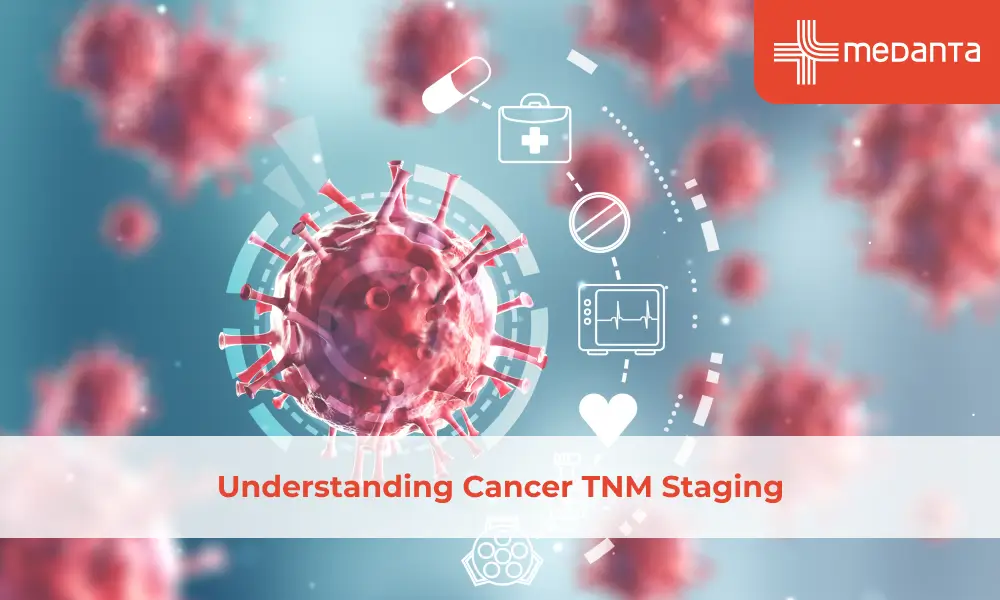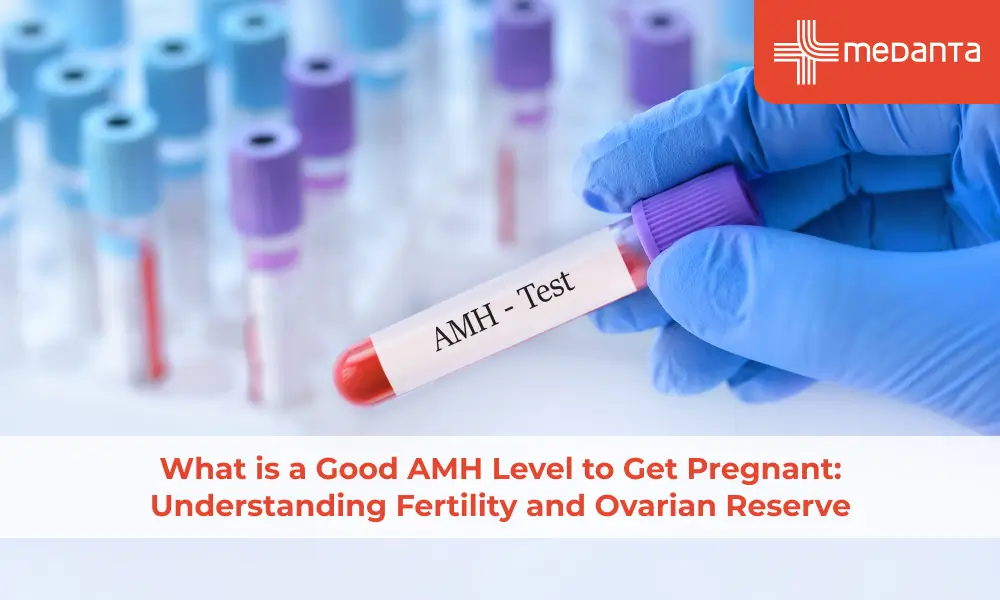Understanding Cancer TNM Staging

TABLE OF CONTENTS
What Does TNM Mean?
Dr. Vaid explains that TNM stands for three important components related to cancer staging.
T (Tumour): Shows how large the main tumour is.
N (Nodes): Tells if cancer has moved into nearby lymph nodes, which are often the first place cancer spreads.
M (Metastasis): Reveals if cancer has reached faraway parts of the body.
How Cancer Grows
To understand TNM better, you need to know how cancer grows. Dr. Vaid says cancer starts as a tiny spot you can’t see. As cells keep splitting, they create a cluster of cells that forms a defined tumour in one organ.
Cancer cells tend to move away from where they first started in three main ways:
Staying in the same area, which changes the T classification
Spreading to the lymph nodes nearby, which changes the N classification
Reaching far-off organs through the bloodstream, which changes the M1 classification
How Doctors Measure TNM Parameters
Figuring out a person’s TNM stage involves different ways of checking:
Doctors can sometimes measure superficial tumours with tools like callipers or tape
To find tumours inside the body, check lymph nodes, or spot distant spread, they need imaging tests
These tests might include X-rays, ultrasounds, CT scans, MRI scans or even full-body PET scans
Dr. Vaid explains that staging combines a physical exam with imaging tests. This helps doctors understand how far the cancer has spread.
Why TNM Staging Matters
TNM staging gives oncologists a way to determine the stage of the tumour. Dr. Vaid breaks it down like this:
Stage I or II: Cancer stays within one organ system.
Stage II or III: Cancer reaches regional lymph nodes.
Stage IV: Cancer spreads to far-off organs of the body (M1).
Doctors determine the exact stage by figuring out the specific mix of T, N and M factors. This combination places the cancer into a certain stage group.
Limits of the TNM System
The TNM staging system does not work for every type of cancer. Dr. Vaid points out that it is effective for cancers in specific organs like the lungs, liver or stomach. However, it is not applied to cancers affecting the blood or lymphatic systems.
Cancers like leukaemia and lymphoma are more in the liquid phase, do not create clear, measurable tumours. Instead, their cells spread throughout the body. Because of this, they use other staging methods that better match their behaviour.
Conclusion
Understanding the TNM staging system provides valuable insight into how oncologists classify cancer and determine treatment approaches. This standardised approach helps doctors communicate clearly about a patient's condition and develop appropriate treatment strategies based on the cancer's stage.
As Dr. Vaid explains, this system is primarily relevant for organ-specific tumours and serves as the foundation for much of modern cancer treatment planning.
FAQs
What does TNM mean in cancer staging?
TNM stands for Tumour (T), which measures the main tumour’s size; Nodes (N), which checks if cancer has spread to nearby lymph nodes; and Metastasis (M), which identifies if it has moved to far-off parts of the body.
Why is TNM staging important to cancer patients?
Doctors use TNM staging to understand how cancer has spread in someone's body. This system helps them choose treatments and estimate how the patient could respond. The final stage, listed as Stage I through IV, guides the doctors' treatment plans.
What does it mean when cancer spreads to the lymph nodes (N)?
When cancer spreads to nearby lymph nodes, it means the cancer cells have left the original tumour. Lymph nodes serve as the starting point for cancer to spread further and play a role in determining the N stage in TNM staging.
Does the TNM system stage all cancers?
The TNM system looks at solid tumours found in organs like the lung, liver or stomach. Blood and lymphatic cancers like leukaemia and lymphoma fall under liquid phase cancers. These types don't form solid tumours, so doctors depend on different staging systems for them.
What imaging tools are used to stage cancer with the TNM system?
Doctors rely on X-rays, ultrasound, MRI, CT and full-body PET scans to look at cancer during TNM staging. The type of imaging they choose depends on the cancer type and whether it has spread.
What does Stage IV mean in the TNM system?
Stage IV means the cancer has spread to faraway organs (M1), beyond where the tumour started and nearby lymph nodes. Many see this as the most advanced stage of cancer.






